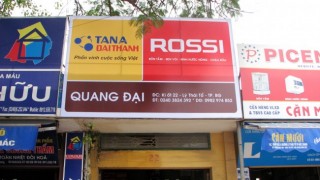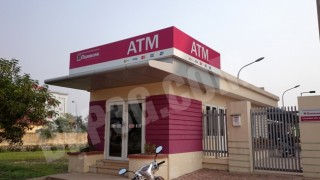Declared and Paid Dividends Journal Entry
- Danh mục: Bookkeeping
He has worked as an accountant and consultant for more than 25 years and has built financial models for all types of industries. He has been the CFO or controller of both small and medium sized companies and has run small businesses of his own. He has been a manager and an auditor with Deloitte, a big 4 accountancy firm, and holds a degree from Loughborough University. Cynthia Gaffney has spent over 20 years in finance with experience in valuation, corporate financial planning, mergers & acquisitions consulting and small business ownership.
- And of course, dividends needed to be declared first before it can be distributed or paid out.
- The first date is when the firm declares the dividend publicly, called the Date of Declaration, which triggers the first journal entry to move the dividend money into a dividends payable account.
- Dividend record date is the date that the company determines the ownership of stock with the shareholders’ record.
- Accountants use special forms called journals to keep track of their business transactions.
- With this journal entry, the statement of retained earnings for the 2019 accounting period will show a $250,000 reduction to retained earnings.
This is due to the dividend income is usually not the main income that the company earns from the main operation of its business. Let’s look at one of the journal entries from Printing Plus and fill in the corresponding ledgers. The subsequent distribution will reduce the Common Stock Dividends Distributable account with a debit and increase the Common Stock account with a credit for the $9,000.
The first date is when the firm declares the dividend publicly, called the Date of Declaration, which triggers the first journal entry to move the dividend money into a dividends payable account. The second date is called the Date of Record, and all persons owning shares of stock at this date are entitled to receive a dividend. A large stock dividend occurs when a distribution of stock to existing shareholders is greater than 25% of the total outstanding shares just before the distribution.
5 Use Journal Entries to Record Transactions and Post to T-Accounts
Just before the split, the company has 60,000 shares of common stock outstanding, and its stock was selling at $24 per share. The split causes the number of shares outstanding to increase by four times to 240,000 shares (4 × 60,000), and the par value to decline air quality to one-fourth of its original value, to $0.125 per share ($0.50 ÷ 4). A small stock dividend occurs when a stock dividend distribution is less than 25% of the total outstanding shares based on the shares outstanding prior to the dividend distribution.
Dividend declaration date
The amount credited to the Dividends Payable account represents the company’s obligation to pay the dividend to shareholders. The debit to Retained Earnings represents a reduction in the company’s equity, as the company is distributing a portion of its profits to shareholders. After the distribution, the total stockholders’ equity remains the same as it was prior to the distribution. The amounts within the accounts are merely shifted from the earned capital account (Retained Earnings) to the contributed capital accounts (Common Stock and Additional Paid-in Capital).
The cash dividend declared is $1.25 per share to stockholders of record on July 1, (date of record), payable on July 10, (date of payment). Because financial transactions occur on both the date of declaration (a liability is incurred) and on the date of payment (cash is paid), journal entries record the transactions on both of these dates. https://www.wave-accounting.net/ The Dividends Payable account appears as a current liability on the balance sheet. To record the declaration of a dividend, you will need to make a journal entry that includes a debit to retained earnings and a credit to dividends payable. This entry is made at the time the dividend is declared by the company’s board of directors.
For example, on December 20, 2019, the board of directors of the company ABC declares to pay dividends of $0.50 per share on January 15, 2020, to the shareholders with the record date on December 31, 2019. Dividends are typically paid to shareholders of common stock, although they can also be paid to shareholders of preferred stock. Shareholders are typically entitled to receive dividends in proportion to the number of shares they own. Similar to the cash dividend, the company may not have the stock dividends account. This is usually due to it doesn’t want to bother keeping the general ledger of the current year dividends.
In this case, the company can make the dividend received journal entry by debiting the cash account and crediting the dividend income account. With this journal entry, the statement of retained earnings for the 2019 accounting period will show a $250,000 reduction to retained earnings. However, the statement of cash flows will not show the $250,000 dividend as it has not been paid yet; hence no cash is involved here yet. Similar to the cash dividend, the stock dividend will reduce the retained earnings at the year-end.
The calculation can be done on a per share basis by dividing each amount by the number of shares in issue. Get instant access to video lessons taught by experienced investment bankers. Learn financial statement modeling, DCF, M&A, LBO, Comps and Excel shortcuts.
Dividends can provide a steady income stream for investors, especially those who rely on their investments for retirement or living expenses. They can also signal the financial health and stability of a company, as well as its confidence in its future growth prospects. Companies that pay consistent or increasing dividends tend to have strong cash flows and earnings, while companies that cut or suspend dividends may face financial difficulties or uncertainty. For example, on December 31, the company ABC receives a cash dividend from one of its stock investments.
Posting to the General Ledger
The balance on the dividends account is transferred to the retained earnings, it is a distribution of retained earnings to the shareholders not an expense. Note that dividends are distributed or paid only to shares of stock that are outstanding. Treasury shares are not outstanding, so no dividends are declared or distributed for these shares. Regardless of the type of dividend, the declaration always causes a decrease in the retained earnings account.
Stock Dividend Journal Entry
You will notice that the transactions from January 3, January 9, and January 12 are listed already in this T-account. The next transaction figure of $100 is added directly below the January 12 record on the credit side. We know from the accounting equation that assets increase on the debit side and decrease on the credit side. If there was a debit of $5,000 and a credit of $3,000 in the Cash account, we would find the difference between the two, which is $2,000 (5,000 – 3,000). The debit is the larger of the two sides ($5,000 on the debit side as opposed to $3,000 on the credit side), so the Cash account has a debit balance of $2,000.
Companies issue stock dividends when they want to bring down the market price of their common stock. The debit to the dividends account is not an expense, it is not included in the income statement, and does not affect the net income of the business. The dividends account is a temporary equity account in the balance sheet.
A high dividend payout ratio is good for short term investors as it implies a high proportion of the profit of the business is paid out to equity holders. However, a high dividend payout ratio leads to low re-investment of profits in the business which could result in low capital growth for both the business and investor. A long term investor might be prepared to accept a lower dividend payout ratio in return for higher re-investment of profits and higher capital growth. At the same time as the dividend is declared, the business will have decided on the date the dividend will be paid, the dividend payment date.
Prior to the distribution, the company had 60,000 shares outstanding. The difference is the 3,000 additional shares of the stock dividend distribution. The company still has the same total value of assets, so its value does not change at the time a stock distribution occurs.

























